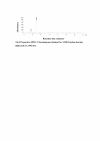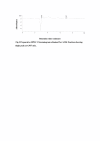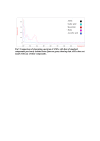Isolation of antibacterial compounds from Quercus dilatata L. through bioassay guided fractionation
- PMID: 22554280
- PMCID: PMC3416653
- DOI: 10.1186/1476-0711-11-11
Isolation of antibacterial compounds from Quercus dilatata L. through bioassay guided fractionation
Abstract
Background: Four medicinal plants (Chrozophora hierosolymitana Spreng, Chrysanthemum leucanthemum L., Ephedra gerardiana Wall. ex Stapf, and Quercus dilatata L.) used by indigenous healers to treat various infectious diseases were selected for the present study. The major objective of the present study was isolation and characterization of antimicrobial components from the crude plant extracts using bioassay guided fractionation.
Methods: Seven methanolic extracts of the four plants were screened to identify any antimicrobial agents present in them. The active crude plant extract was fractionated first by solvent partitioning and then by HPLC. Characterization of the active fractions was done by using spectrophotometer.
Results: All the seven methanolic extracts showed low antifungal activity, however, when these extracts were tested for antibacterial activity, significant activity was exhibited by two extracts. The extract of aerial parts of Q. dilatata was most active and therefore, was selected for further analysis. Initially fractionation was done by solvent-solvent partitioning and out of six partitioned fractions, ethanol fraction was selected on the basis of results of antibacterial activity and phytochemical analysis. Further, fractionation was carried out by RP-HPLC and purified active subfractions were characterized by comparing their absorption spectra with that of the known natural products isolated from the plants of Quercus genus.
Discussion and conclusion: The results suggest that this is the first report of the isolated antibacterial compounds from this genus.
Figures





Similar articles
-
Antibacterial activities of the methanol extract, fractions and compounds from Elaeophorbia drupifera (Thonn.) Stapf. (Euphorbiaceae).BMC Complement Altern Med. 2017 Jan 7;17(1):28. doi: 10.1186/s12906-016-1509-y. BMC Complement Altern Med. 2017. PMID: 28061888 Free PMC article.
-
Antibacterial and antifungal activity of solvent extracts from Plumeria obtusa Linn.Trop Biomed. 2014 Dec;31(4):607-15. Trop Biomed. 2014. PMID: 25776586
-
Polarity directed optimization of phytochemical and in vitro biological potential of an indigenous folklore: Quercus dilatata Lindl. ex Royle.BMC Complement Altern Med. 2017 Aug 3;17(1):386. doi: 10.1186/s12906-017-1894-x. BMC Complement Altern Med. 2017. PMID: 28774308 Free PMC article.
-
A review of the antibacterial activity of Hypericum perforatum L.J Ethnopharmacol. 2010 Oct 5;131(3):511-21. doi: 10.1016/j.jep.2010.07.034. Epub 2010 Jul 24. J Ethnopharmacol. 2010. PMID: 20659547 Review.
-
An overview of the antifungal potential for aromatic plant extracts in agriculture and the food industry: A comprehensive analysis focusing on the Rubus, Cistus and Quercus genera against fungal infections of crops and food.Int J Food Microbiol. 2025 May 16;436:111209. doi: 10.1016/j.ijfoodmicro.2025.111209. Epub 2025 Apr 12. Int J Food Microbiol. 2025. PMID: 40253950 Review.
Cited by
-
Bioactive extracts of Carum copticum L. enhances efficacy of ciprofloxacin against MDR enteric bacteria.Saudi J Biol Sci. 2019 Nov;26(7):1848-1855. doi: 10.1016/j.sjbs.2017.12.008. Epub 2017 Dec 22. Saudi J Biol Sci. 2019. PMID: 31762667 Free PMC article.
-
Anti-Herpes Simplex Virus Type-1 Activity and Phenolic Content of Crude Ethanol Extract and Four Corresponding Fractions of Quercus brantii L Acorn.J Evid Based Complementary Altern Med. 2017 Jul;22(3):455-461. doi: 10.1177/2156587216676421. Epub 2016 Nov 30. J Evid Based Complementary Altern Med. 2017. PMID: 27899436 Free PMC article.
-
Antibacterial activity of medicinal plants in Indonesia on Streptococcus pneumoniae.PLoS One. 2022 Sep 13;17(9):e0274174. doi: 10.1371/journal.pone.0274174. eCollection 2022. PLoS One. 2022. PMID: 36099236 Free PMC article.
-
Effects of yeast and dried kratom leaves (Mitragyna speciosa [Korth] Havil.) supplementation on digestibility, rumen fermentation, blood metabolites and nitrogen balance in goats.Anim Biosci. 2024 Feb;37(2):228-239. doi: 10.5713/ab.23.0153. Epub 2023 Dec 11. Anim Biosci. 2024. PMID: 38098130 Free PMC article.
-
Pharmacognostic evaluation of Artemisia maritima L. a highly medicinal specie of genus Artemisia.Saudi J Biol Sci. 2022 Oct;29(10):103419. doi: 10.1016/j.sjbs.2022.103419. Epub 2022 Aug 17. Saudi J Biol Sci. 2022. PMID: 36060112 Free PMC article.
References
-
- Malheiros A, Filho VC, Schmitt CB, Yunes RA, Escalante A, Svetaz L, Zacchino S, Monache FD. Antifungal activity of drimane sesquiterpenes from Drimys brasiliensis using bioassay-guided fractionation. J Pharm Pharmaceut Sci. 2005;8:335–339. - PubMed
-
- Harraz FM, Abdel-Aziz SA. Chemical and biological studies of Chrozophora verbascifolia. Zagazig J Pharm Sci. 1994;3:72–78.
Publication types
MeSH terms
Substances
LinkOut - more resources
Full Text Sources
Medical
Molecular Biology Databases

